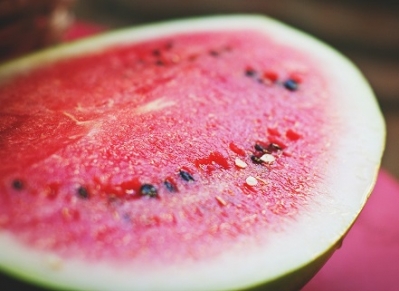Protein Powder: The Essential Guide

By Gavin Deguara, B Health Sc, Nutr Med
Introduction
This article has been designed as a resource to offer insight into protein requirements, with a focus on optimal intakes, highlighting the differences between protein powder sources.
The information presented is based on scientific research covering the more practical aspects of protein nutrition, with strong regard for research undertaken by Donald Layman Ph.D., Robert R. Wolfe, Ph.D., CSIRO and the Journal of the International Society of Sports Nutrition.
The focus is placed on protein quality and quantity requirements, which is a massive topic within itself. It is not within the scope of this article to cover other crucial aspects of diet, such as energy content, micronutrient density, phytochemicals, fibre, glycemic index and load, essential fatty acids and cultured foods.
Rather than reading this article from start to finish, you may prefer to use the index below and jump straight to questions of interest. Enjoy!
____________________________________________________________________________________________
What’s In This Article?
What is Protein?
What does Protein Powder do?
What are Protein Powders Made From?
How Much Protein Do We Need?
What about Protein Quality?
Don’t Australian’s already Eat Enough Protein?
Protein per Meal, Meals per Day
Is a Post-Workout Protein Shake Important?
What if You Eat too much Protein?
Do You Need a Protein Powder?
What’s the Best Protein Powder for You?
Vegan Protein Powders
Pea Protein, Rice Protein, Hemp Protein, Soy Protein.
Novel Vegan Protein Powders
Watermelon Seed Protein, Pumpkin Protein, Fababean Protein, Algae Protein.
Dairy Protein Powder
Whey Protein, Hydrolyzed Whey Protein, Casein Protein, Milk Protein Isolate
Egg Protein Powder
Collagen Protein Powders
Marine (fish) Collagen, Bovine (cow) Collagen
Lactose-Free Protein Powders
Jump to Lactose-Free Protein Powders
____________________________________________________________________________________________
What is Protein?
Protein is one of three macronutrients found in food and drink that we commonly consume, along with fats and carbohydrates. Protein is made up of amino acids, which are composed of carbon, hydrogen, nitrogen, oxygen and sulfur.
The word protein is taken from the Greek term proteos, which means “taking first place” or “primary”. This is a fitting descriptive term given that protein is a macronutrient of vital importance to human health.
Protein molecules are made up of chains of amino acids joined by peptide bonds. Proteins can be compared to chains, where every link in the chain is an amino acid.

Proteins are found everywhere in life. The sting of a wasp contains proteins, as does gluten found in wheat and the origins of jellyfish’s glow. Proteins are found everywhere in the human body as well, important for its structure and function.
Protein is needed for healthy bones, teeth and organs, while skin, muscle and connective tissues also require it. The average human body is made up of about 17% protein, nearly half of which is found in myosin, actin, collagen and haemoglobin.
The amino acids contained in protein are needed for countless metabolic reactions in the human body as well. The most important are the nine essential amino acids, which the human body cannot synthesize.
For instance, phenylalanine is an essential amino acid needed for the synthesis of a range of neurotransmitters, such as dopamine, noradrenaline and adrenaline, which impact mood and behavior.
Other essential amino acids are needed for proper hemoglobin formation in red blood cells, while others are needed for coenzyme Q10 production and thyroid hormone synthesis.
This is really the tip of the iceberg when it comes the important roles amino acids play in the human body. And they’re all supplied through dietary protein.
Though many still debate the benefits of protein powders, these products undeniably contain nine of the most important nutrients for the human body in a convenient, economical and easily digestible form.

What does Protein Powder do?
Protein Powders typically contain a high percentage of protein and minimal calories. These products can be as high as 94% protein by weight.

Due to the high protein content and minimal energy values, a protein powder can be introduced into the diet without a major impact on total calorie intake.
When compared to other protein rich foods, the protein content of protein powders becomes more evident. For instance, cooked chicken breast (skinless) is approximately 31% protein, while cooked egg whites are around 11% protein1.
The macronutrient balance of protein powder can be helpful when engaging in weight loss, as protein intakes tend to drop during this time, leading to losses of important muscle mass2.
Protein powders are easy to consume within a short period of time, requiring little food preparation. Unlike most protein food sources, dry protein powders can be stored at room temperature without spoilage.
Most protein powders are digested and absorbed relatively quickly within the human digestive system. This makes them unique as a protein source, as blood amino acid levels spike rapidly ensuring systemic tissues receive the nourishment they need quickly.
Protein shakes are used by people for a
wide variety of reasons, including:
Low Dietary Protein Intake.
Adapting to a Vegan Eating Plan.
Weight Loss Programs.
Muscle Maintenance and Muscle Building.
Healthy Aging.
High Dietary Protein Needs.
Poor Appetite.
Convenience.
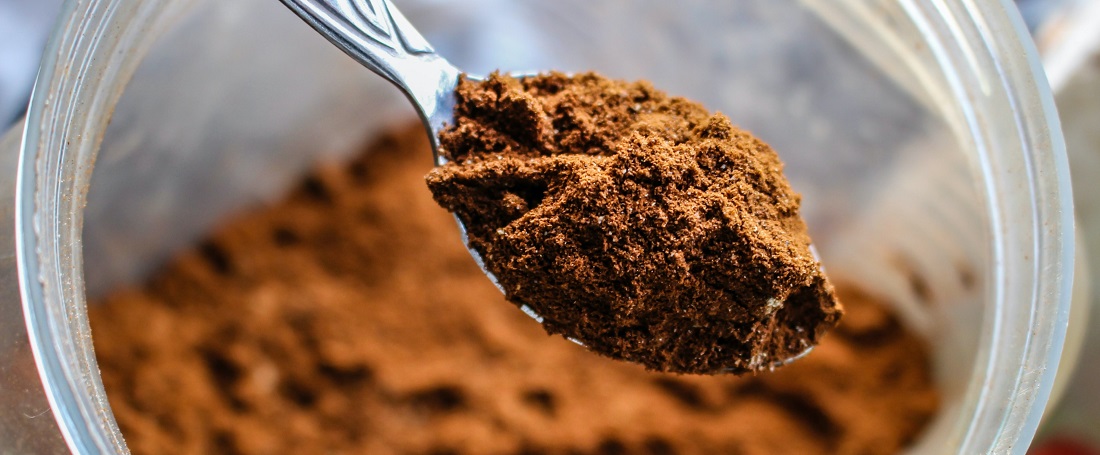
What are Protein Powders Made From?
With the right manufacturing methods, a protein powder can be created from just about any food source, whether it is plant or animal in origin.
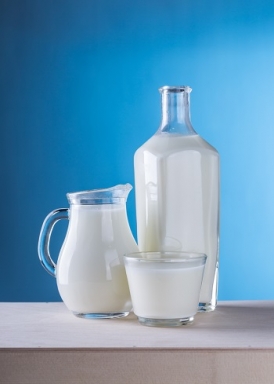 Whey protein is the most common protein powder. It is a by-product of cheese manufacture and ultimately comes from cow’s milk as. Casein is also derived from dairy.
Whey protein is the most common protein powder. It is a by-product of cheese manufacture and ultimately comes from cow’s milk as. Casein is also derived from dairy.
Other animal sourced protein powders include hydrolyzed collagen from both bovine and marine sources, egg white powders, with even salmon, chicken and beef protein beginning to enter the marketplace in Australia.
Many vegan sourced protein powders are extracted from seeds, such as sacha inchi, carob, watermelon and pumpkin, with hemp reaching popularity for its additional micronutrient and fatty acid content.
One of the first legume protein powder sources was soy protein, while pea and rice protein have gained popularity, along with the new fababean (broad bean) protein.
How Much Protein Do We Need?
Determining your individual protein needs usually requires a balance between understanding the published protein intake guidelines, and some experimentation to see where you fit within these guidelines.
It is also possible that your needs may fit somewhere outside of these guidelines. And this is worth some consideration.
The protein recommendations made by various government bodies, institutions and societies are best used as a basic framework. These are an excellent place to start and see how your body responds and how your digestive system manages the dietary change.
Protein intake recommendations are put forth by global organisations, such as the World Health Organisation and the Australian Government, which tend to be more concerned with the prevention of frank deficiencies. These recommendations are usually based on nitrogen balance, as measured by comparing protein (nitrogen) intake through the diet versus nitrogen losses via skin, hair, urine, feces and sweat.
When dietary protein intake is lower than losses, a person is in a negative nitrogen balance, associated with catabolism. However, when intake exceeds losses, they are said to be in a positive nitrogen balance and an anabolic state.

The WHO specifically state: “ … the protein requirement of an individual is defined as the minimum intake that enables nitrogen equilibrium … “3. At first glance, this approach appears to make a great deal of sense.
However, nitrogen losses are increased under certain circumstances, as a result of increased protein catabolism, due to cytokine and catabolic hormone changes, and decreased food intake. This can occur during infection, psychological stress, trauma, sepsis or other injury.
Moreover, as we age, amino acid reserves decline, as indicated by lean muscle mass, and are increasingly difficult to attain. Therefore, preparing for even acute incidence of poor health (such as the flue), and approaching old age, with considerable lean tissue reserves seems a wise health decision.
And this is achieved with a quality diet, rich in bioavailable protein, regular resistance exercise and a balanced lifestyle that includes adequate sleep, stress reduction techniques and the management of any co-morbidities.
There is a strong body of evidence indicating that protein intakes designed to attain nitrogen balance alone are not enough to attain the following:
- Optimal Health.
- Prevent Chronic Disease.
- Enhance Exercise Adaptation.
- Promote Fat Loss.
- Prevent Obesity.
- Maintain or Build Lean Tissue Mass.
- Improve Convalescence.
The following is a chart of protein intake recommendations from a number of organisations. This is simply to give you an idea of the differences between some of the recommendations.
The Commonwealth Scientific and Industrial Research Organisation (CSIRO), an Australian Federal Government Agency, and the Journal of the International Society of Sports Nutrition (JISSN) offer more dynamic recommendations in alignment with current evidence.
|
WHO |
>18 Years (Women and Men) |
0.83g/kg/day* |
|
Men 19-70 Years |
0.84g/kg/day |
|
|
|
Men >70 Years |
1.07g/kg/day |
|
|
Women 19-70 Years |
0.75g/kg/day |
|
|
Women >70 Years |
0.94g/kg/day |
|
>18 Years (Women and Men) |
1.4-2.0g/kg/day |
|
|
CSIRO to Prevent and Treat Obesity, Increase Muscle Mass and Strength in Healthy Adults, Maintenance for Older Adults6 |
>18 Years (Women and Men) |
1.2-1.6g/kg/day |
* Protein with a protein digestibility-corrected amino acid score (PDCAAS) value of 1.0.
From here, a common sense approach is the best way forward. If you exercise regularly, the JISSN guidelines are a great place to start experimenting with.
However, the JISSN guidelines of 1.4-2.0 grams of protein per kilogram of bodyweight is quite a broad range. If you are regularly engaged in more aerobic exercise, like running, swimming or cycling, the low end or middle of this range is a good place to start.
Conversely, if you engage in resistance exercise regularly, then 1.9-2.0g/kg/day may be a better position. This is close to the age-old bodybuilding recommendation of 1 gram per pound of bodyweight, which actually equates to 2.2g/kg/day.
If you aren’t squeezing much exercise in, then the CSIRO guidelines may be more appropriate, at 1.2-1.6g/kg/day.
Protein Recommendations Chart
Based on Your Ideal Bodyweight
|
Sedentary (Get Moving) |
1.2-1.6g/kg/day |
CSIRO |
|
Endurance Exercise |
1.7-1.8g/kg/day |
JISSN |
|
Resistance Exercise or Combination |
1.9-2.0g/kg/day (perhaps more) |
JISSN |
If your protein intake has been low for some time it would be a good idea to keep your protein intake at the higher end of the JISSN range, at least until your lean mass has recovered.
These protein calculations need to be based on your ideal bodyweight. It’s worth noting that if you have been regularly engaging in resistance exercise, your ideal bodyweight will likely be higher than it used to be, to due a higher muscle mass level.
Ideally, your ideal bodyweight needs to be based on a healthy bodyfat percentage. Also, if your lean tissue mass is low, your normal bodyweight will need to be increased for the purposes of this calculation.
In an article written by Geisler C et al. and published by Nutrients, they state “ … body weight-based recommendations are inadequate to classify the differences in protein needs of healthy subjects or clinical populations.”7
It is important, especially if you are regularly exercising, that you experiment with different protein intakes and observe the way your body responds. The genetic and phenotypic differences from person to person can be significant enough to require considerable protein requirement differences.

What about Protein Quality?
Considering protein quality and distribution throughout the day are just as important as total protein intake. A CSIRO report published in 2017 indicated that Australian’s derive 60% of their daily protein intake from fast-food, flour-based snacks and grains.
Though fast-food is generally not a healthy dietary option, many products, such as burgers and fried chicken do contain a substantial amount of quality protein.
However, the significant reliance upon grains for protein, particularly wheat, is of concern, as is the elevated glycemic index, high calorie and sodium content and low micronutrient and phytochemical values of take-away and processed food.
One of the most important considerations when it comes to daily protein intake is what sources you will regularly rely upon and their biological value (protein quality).
So what are we really talking about when it comes to protein quality?
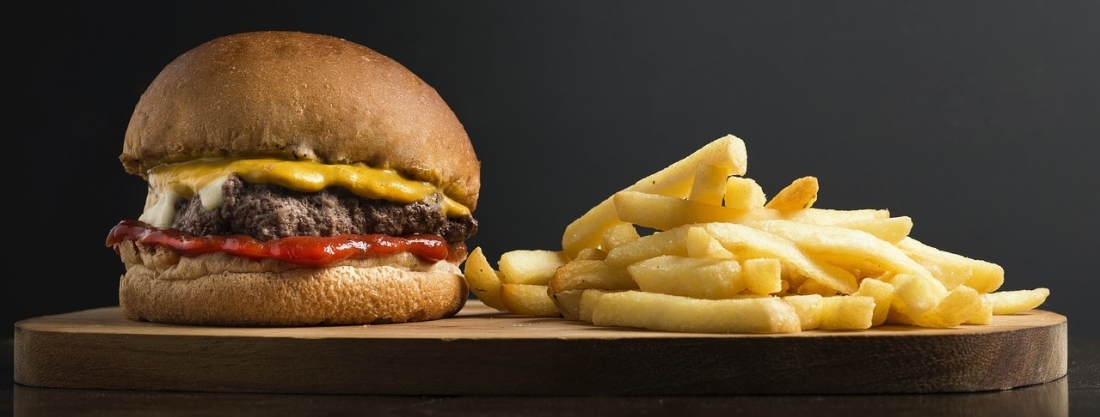
It’s all about the balance of amino acids within the protein food, primarily essential amino acids, and how that protein is digested and absorbed in the human digestive tract. In addition, anti-nutrients found in plant-based foods can interfere with amino acid absorption, such as trypsin inhibitors found in soybeans and kidney beans.
The Protein Digestibility Corrected Amino Acid Score (PDCAAS) has been recommended by the Food and Agriculture Organization (FAO), a subsidiary of the World Health Organization, and used widely within the scientific world.
Recently this method was been found to be inadequate, for reasons such as: not sufficiently credit high quality proteins, overestimated products containing anti-nutritional factors, did not properly assess amino acid bioavailability.
The most recent methods promoted by the FAO is the Digestible Indispensable Amino Acid Score (DIAAS). This takes into consideration many more factors than the original PDCAAS.
However, the list of foods that have been tested to determine their DIAAS is limited. Hence, PDCAAS is still a relevant method.
Here’s a list of some common protein powders and protein food sources, released by the FAO. This is the best available evidence we have for assessing the quality of a protein within a food or protein powder.
|
|
Whey Protein Concentrate |
Whey Protein Isolate |
Sodium Caseinate |
Rice Protein Concentrate |
Soy Protein Isolate |
Skim Milk Powder |
Pea Protein Concentrate |
|
DIAAS |
95* |
99* |
100 |
80 |
98 |
88 |
97* |
|
|
Wheat Flour |
Roasted Peanuts |
Oats |
Cooked Peas |
Cooked Mung Beans |
Cooked Kidney Beans |
Milk Protein Concentrate |
|
DIAAS |
92 |
91 |
77 |
73 (average) |
82.5 (average) |
80* |
89 |
|
|
Fish (Chinese) |
Cooked Egg |
Raw Egg |
Coconut |
Biscuits |
Casein |
Bread |
|
DIAAS |
90.5 (average) |
91 |
51 |
54 |
91.5 (average) |
95 |
91 |
* Indicates results based on rodent research, the rest are based on human studies.
Don’t Australian’s Already Eat Enough Protein?
It can be hard to believe that in a developed nation, where obesity is common, there could be such a thing as a nutritional deficiency.
However, nutrient deficiencies are common in Australia as they are in many developed nations around the world, particularly for nutrients such as Vitamin D, iodine, magnesium, zinc, iron and more.
Due to the abundance of process and take away food, it is now easier than ever to have a diet rich in calories that are of a low micronutrient density, and contain inadequate protein, fibre and omega 3 essential fatty acids.
The below table indicates average protein intakes in Australian adults for age range and gender.
According to the CSIRO, the average Australian man weighs 86kg, while the average woman weights 71kg. It’s hard to know how close these figures are to an ideal bodyweight, however, as 2/3 of Australian’s are either overweight or obese.
Some, obesity and overweight statistics may actually be underreported due to sarcopenia or low muscle mass levels. Age-related sarcopenia is presumed to affect around 5-13% of 60-70 year olds and 11-50% for those aged 80 years or more8,9.
Overweight and obesity are typically calculated via the BMI method, which uses height and weight to determine the category for that individual. However, low muscle mass coupled with a higher than ideal fat mass would still qualify that person for a normal bodyweight, despite the fact that they need more muscle and are holding too much fat mass.
Though the below table may slightly overestimate protein needs, as total body weight, and not ideal bodyweight, is being applied to the protein calculations, this is feasible given that a higher protein intake will be needed in order to recoup low muscle mass levels through increased muscle protein synthesis stimulated by a higher protein intake.
Using your ideal body weight is always the best way to calculate your protein requirement.
Based on these average Australian bodyweight figures, the following represents the CSIRO and JISSN protein intake recommendations:
|
Calculations Based on Average Australian Bodyweight of 71kg for Women and 86kg for Men |
Women |
Men |
||
|
19-70 Years |
>70 Years |
19-70 Years |
>70 Years |
|
|
Average Daily Protein Intake |
79g |
72g |
107g |
83g |
|
Australian RDI |
53g |
67g |
72g |
92g |
|
CSIRO (Lowest Recommendation) 1.2g/kg/day |
85g |
85g |
103g |
103g |
|
JISSN (Highest Recommendation) 2.0g/kg/day |
142g |
142g |
172g |
172g |
This table makes it abundantly clear as to why so many say Australians eat plenty of protein, while others say we don’t. It all depends upon whether “enough protein” constitutes the minimum quantity to get by on or an intake to promote optimal health.
Young Australian men and women, and elderly women, consume protein over the amount set by the RDI, in terms of grams (quantity). However, elderly men typically fall short of even this basic daily intake.
In addition, the low quality of protein that constitutes a fairly significant proportion of the Australian diet leaves elderly men at an even greater risk for protein deficiency, and also place elderly women at risk.
When comparing the CSIRO and JISSN protein figures, it becomes obvious that the average Australian’s protein intake is inadequate to meet these recommendations, especially if they want to optimise adaptation from exercise and manage obesity.
In fact, exercising elderly men and women would need to more than double their daily protein intake in order to meet the highest recommendations of JISSN, as well as improve the quality of that protein.
Protein per Meal and Meals per Day
The best information regarding protein content in each meal or serving has been studied by Donald Layman, Ph.D., indicating that for most people, 30 grams per meal is a minimum requirement for generating muscle protein synthesis10.
This figure takes into consideration the fact that most meals contain protein from a range of sources, some with higher biological value than others, with varying leucine contents.
This research by Layman indicates that a minimum leucine threshold is required to activate mTOR, which initiates muscle protein synthesis. And for most, a 30 gram serve of protein will achieve this11.
However, if your protein needs are quite high, you may need to increase this figure in order to avoid eating more meals per day than you can handle.
Let’s take a look at an example of a protein requirement and how this can be achieved throughout the course of a day.
Jenny has a body fat percentage within the normal range, and weighs 70kg. She regularly exercises, engaging in a mixture of martial arts and crossfit. She is adhering to the JISSN recommendation of 1.8 grams of protein per kilogram of ideal body weight per day, as she finds this a manageable protein amount and feels this quantity optimises her exercise performance and recovery.
This gives her a daily protein requirement of 126 grams.
Given that it takes 4 to 5 hours for muscle protein synthesis to reset in muscle, termed the refractory period, we are aiming for a protein feed every 4.5 hours, and four feeds per day in order to achieve her daily requirement.
Here is a basic example of Jenny’s meal plan:
- 6am: 33 grams of protein: vegetable and herb omelette, followed by a small serving of greek yoghurt mixed with an oat-based granola.
- 10:30am: 30 grams of protein: salmon and tempeh salad with dressing.
- 3:00pm: 30 grams of protein: protein shake, a piece of fruit and a small palm full of raw nuts.
- 7:30: 33 grams of protein: roast chicken and vegetables.
Let’s take another example. Barry has a high muscle mass level and slightly high body fat percentage, and weighs 107kg. He regularly engages in bodybuilding style training and believes a healthy bodyweight to be around 100kg.
Harry is targeting 2.0 grams of protein per kilogram of ideal body weight due to the regular intense weight training sessions he needs to recover from.
Due to this man’s high lean tissue mass, he is targeting a protein portion every 4 hours, with enough in quantity to satisfy his daily protein target of 200 grams.
- 6am: 40 grams of protein: omelette with cheese, beans and vegetables.
- 10:00am: 40 grams of protein from salmon and tempeh with brown rice and steamed greens.
- 2:00pm: 40 grams of protein: whey protein shake, handful of raw nuts and a piece of fruit.
- 6:00pm: 40 grams of protein roast chicken and vegetables.
- 10:00pm: 40 grams of protein: casein protein shake before bed (or casein custard).
These examples are basic guides to give you some idea of how to approach your daily protein intake.
Meal planning and preparation are always important factors, though both of these meals plans only contain three prepared meals daily, while the rest of the protein is derived from protein powders for the sake of convenience.
Few lifestyles are so perfectly balanced as to allow for exact meal times each day. The times and protein quantities that you come up with are simply ideals to aim for on a daily basis.
Is a Post-Workout Protein Shake Important?
A protein shake is not essential for optimal recovery from exercise. Whole food sourced protein with a high biological value is a powerful stimulator of muscle protein synthesis and will support optimal adaptation to exercise, as long as enough is consumed in terms of quantity and quality.

Consuming a quality protein source soon after exercise is a good idea, particularly if that exercise has been intense and prolonged, as this generates a strong catabolic response12.
However, the importance of this post-workout protein feed being a rapidly digested product, like whey protein powder, is often overstated. Slower releasing protein derived from meals are an excellent post-workout recovery aid.
Evidence is indicating that after a single bout of exercise, protein synthesis in muscle builds up and peaks around can stay elevated for as long as 48 hours, and perhaps even 72 hours, depending on the extend of muscle damage13.
In fact, muscle protein synthesis slowly builds up over time after exercise (48-72 hours), which places more emphasis on nutritional balance and lifestyle over days in order to adapt to exercise most efficiently (rather than a small window consisting of minutes after exercise).
What if You Eat Too Much Protein?
It seems that whoever or whatever becomes famous will at some point be vilified. Protein is no exception, with health claims that have lasted decades pointing towards the dangers associated with what is actually an incredibly safe and important nutrient.
Fortunately, scientists have been busy studying the effects of protein and publishing their findings in numerous journals in recent times, offering more clarity when it comes to understanding the impacts of extremely high protein intakes.
No association between protein intake and long-term kidney function in healthy individuals has been found. It is only those suffering with reduced kidney function that need to be cautious with protein intake.
In fact, protein intakes below 0.8g/kg/day actually increase the risk of mortality14.
High protein low-carbohydrate diets have been assessed for their impact on blood pH, with results indicating that there were very little changes in blood chemistry and pH15.
Though the long-term safety of high protein diets has not assessed (>2.0g/kg/day), there is short-term safety data (8 weeks) indicating that 3.4 grams per kilogram of bodyweight is fine during a heavy resistance training program.
This study (3.4g/kg/day) performed a basic metabolic panel, including Creatinine, Urea Nitrogen, BUN/Creatinine Ratio and GFR and found no adverse effects in the high protein group. However, the researchers did note that the high protein group had increased fat-free mass (a marker of muscle mass) compared to the control group (2.3g/kg/day)16.
Another study assessing the effects of 4.4 grams of protein per kilogram of bodyweight per day found that body fat levels did not increase, despite consuming 5.5 times the recommended daily allowance for this macronutrient17.
In addition, the high protein group actually consumed significantly more calories than the control group, yet did not gain additional fat mass. This illustrates the difficulty the human body has in converting amino acids into triglycerides for storage as fat.
It is worth noting that an extremely high dietary intake of any single macronutrient, such as protein, by nature excludes other macronutrients. Due to the fact that some essential nutrients are more strongly associated with specific macronutrients, this can set an individual up for nutritional deficiencies in the long-term.
For instance, a strong dietary focus on protein rich food to the exclusion of fruits and vegetables, will set a person up for a low intake of nutrients such as fibre, vitamin C and bioflavonoids, and important phytochemicals such as lycopene and beta-carotene.
Anyone constructing a diet around a high protein intake >2/kg/day needs be aware of any nutritional limitations they are creating in order to protect against deficiencies.
Do You Need a Protein Powder?
This is a much more simplistic and uncontroversial topic than most people believe.
The Journal of the International Society of Sports Nutrition states “ … supplemental protein is a safe and convenient method of ingesting high-quality dietary protein.”5
If you are finding it hard to get enough protein in terms or quantity or quality (DIAAS) or both, then a protein powder is a convenient and cost-effective solution.
However, when protein needs are quite high, many aren’t disciplined enough to meet their daily intake or they physically have difficulty consuming enough due to digestive difficulties.
Apart from better planning and seeking the council of a healthcare practitioner, protein powders can be helpful in these situations, offering an easily digestible form of this nutrient.
Your protein requirement and intake needs to be assessed individually. Based on this information you can then make a decision as to whether or not you will choose to include a protein powder into your daily lifestyle.
However, protein derived from whole foods are always preferable to powders, given that they offer a range of accessory nutrients that powders often lack.
What’s the Best Protein Powder for You?
This all depends on the highest quality (PCDAAS or DIAAS) protein powder available within your dietary preferences.
For instance, vegan diets exclude dairy products such as whey and egg protein, while pesceterian diets allow whey and even marine collagen, while omnivore diets have access to all types of protein powder.
Within the confines of your dietary preferences, there are also many other factors to consider, such as food intolerance, allergies and the speed of amino acid absorption.
Many with multiple food sensitivities and intolerances tend to start with plain rice protein powder as the product that is least likely to trigger a reaction.
Obviously, if you are lactose intolerant, plant-based protein powders are ideal. However, most lactose-intolerant individuals can consume up to … grams of lactose per day without issues. In this case, a whey protein isolate would also be suitable.
If you are engaging in an intense and heavy weight lifting program, you may like to include some hydrolysed collagen powder to support soft tissue and muscle healing, in addition to a quality whey protein powder, pea and rice blend, pea protein isolate or soy protein isolate.
When it comes to palatability, whey protein is certainly the best product. There are literally hundreds of delicious flavours to choose from while the texture is typically smooth when mixed in water.
Vegan Protein Powders
Pea protein powder is extracted from Golden Yellow Peas (Pisum sativum), a source of folate, selenium, potassium, magnesium, calcium and soluble fibre18.
The high fibre content of many plant proteins, compared to animal sourced products, offers benefits to digestive and cardiovascular health19. Fibre is also more filling and increases the sustained release effect of the protein.

Pea protein is a rich source of amino acids, containing all nine essential amino acids, particularly high in arginine, histidine and phenylalanine. Compared to whey protein, pea protein is most limited in methionine, followed by threonine.
Due to this methionine limitation, pea protein is often blended with rice protein to create a more complete essential amino acid profile. This is due to a rice protein powder methionine content of 2g/100g, compared to pea protein at 0.3g/100g and whey protein at 1.8g/100g20.
Despite these slight theoretical shortcomings of pure pea protein as a supplement, so far practical research is pointing towards performance, recovery and body composition results that are similar to whey protein.
research published in 2019 showed that performance and body composition changes after 8 weeks of high intensity interval training were the same for a whey protein supplemented group compared to a pea protein group. Both groups increased their one repetition maximum lift for deadlift and squat at the end of the study21.
Another study indicated that pea protein is just as effective as whey protein at promoting muscle thickness in response to an exercise program. This is evidence of a product able to generate muscle protein synthesis, and thus provide quality bioavailable protein nutrition22.
Despite the nutritional power of pea protein and its ability to deliver verifiable results, this product has not been without its concerns. This is primarily due to its anti-nutrient content.
Pea protein contains lectins, phytic acid, oxalic acid and tannins18,23. However, new DIAAS bioavailability testing undertaken by the FAO indicates the impact of these on amino acid absorption is minimal, given that pea protein concentrate has a score of 97.
Rice protein is extracted from rice using enzymes to separate the carbohydrate portion from the protein. Most rice protein products are quite smooth, though first entered the market many decades ago as a gritty and unpalatable.
Rice protein powder contains all nine essential amino acids, though it has a limited lysine content, followed by threonine. Rice protein is a particularly rich source of methionine and phenylalanine.
Though there is limited research examining the benefits of rice protein supplementation on sports and exercise performance and recovery, one study did compare these parameters for whey and rice protein supplemented groups.
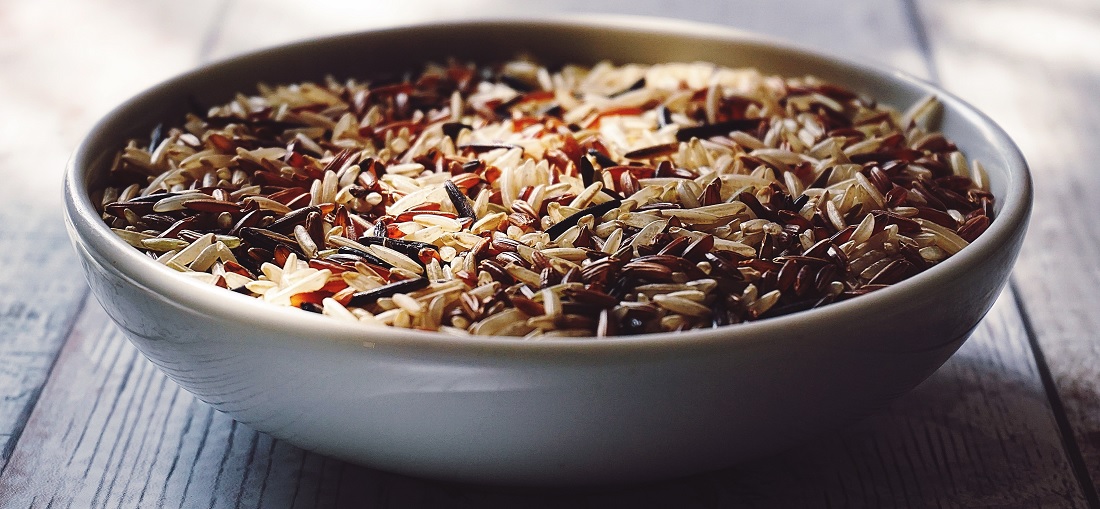
After eight weeks of whey or rice protein supplementation and measurement of body composition and exercise performance, no differences were noted between the two groups. Both groups made significant improvements24.
A study looking at blood amino acid levels after rice protein and whey protein isolate showed a minor 6.8% greater level in the whey group, though leucine reached the blood faster in the rice protein group, suggesting a potentially quicker mTOR activation and muscle protein synthetic response25.
This last study does not mean a lot in terms of using rice protein practically. DIAAS figures, as released by the FAO, and studies assessing body composition, exercise performance and recovery, are ideal for assessing a protein’s relevance.
Despite the fact that hemp seeds have been a nutritional resource for thousands of years, hemp protein is a relative newcomer to the protein powder market and has quickly sparked consumer interest.
Hemp protein powder is extracted from hemp seeds, which are technically a nut. Hemp protein is primarily composed of two forms: edestin (globulin) and albumin. Hemp seed protein contains plentiful arginine and glutamine, as well as the sulfur containing amino acids cysteine and methionine26.
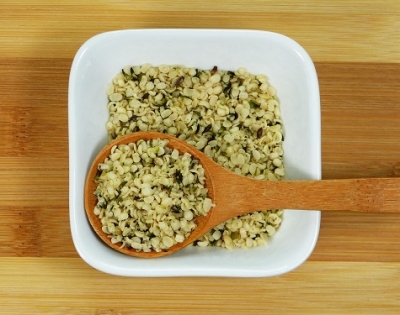 Though hemp protein contains all nine essential amino acids, it is limited in its lysine content, followed by leucine and tryptophan. This is believed to be the reasons why hemp has been shown to have a relatively low PDCAAS (bioavailability) score27.
Though hemp protein contains all nine essential amino acids, it is limited in its lysine content, followed by leucine and tryptophan. This is believed to be the reasons why hemp has been shown to have a relatively low PDCAAS (bioavailability) score27.
Hemp protein isolates can contain up to 94% protein by weight, making them exceptionally high in this macronutrient. Hemp seeds are probably best conceived of as a source of a broad range of nutrients, not just protein.
This is due to the fact that hemp seeds are a rich sources of fatty acids, including Omega 6 and Omega 3, Conjugated Linoleic Acid (CLA) and Gamma Linolenic Acid (GLA). In addition, they contain Vitamin E, potassium, magnesium, sulfur, calcium, iron and zinc28.
Hemp protein powders are yet to be compared to whey protein isolates with regards to their effects of body composition and performance.
The sports nutrition industry has been slowly moving away from soy protein products for some time now. This is due to the belief that soy protein promotes oestrogen, can interfere with thyroid function and is generally an undesirable product.
However, scientific research shows that soy foods do not adversely affect thyroid function or hormone absorption from supplements. This is based on human research, and not the commonly quoted in-vitro or animal studies that highlight evidence to the contrary29.
Soybeans contain natural phytochemicals called phytoestrogens. These are weakly estrogenic compounds that can displace stronger estrogen hormones in healthy individuals, creating a lower net estrogen effect.
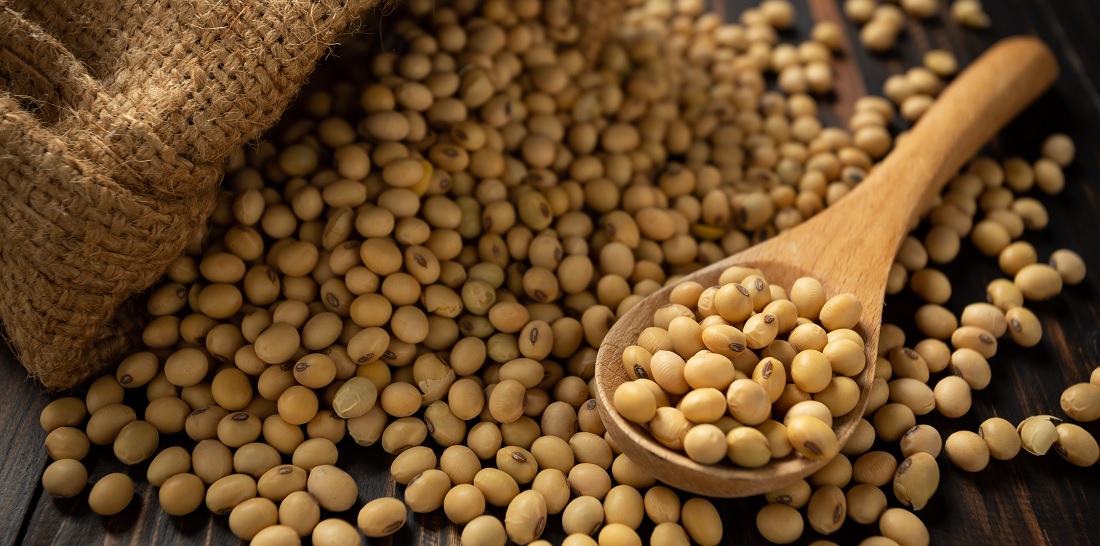
Researchers have studied the effects of whey protein, soy protein or placebo in college aged men, examining androgen and estrogen signaling and hormone levels. No differences were noted between groups30.
Soy protein is in fact one of the few products that has been shown to reduce the risk of coronary heart disease, breast and prostate cancer, supported by over 25 years of investigation. Soy protein has been shown to reduce LDL cholesterol and modestly decrease blood pressure31.
In fact, the Food and Drug Administration actually recommend 25 grams of soy protein per day to reduce cholesterol levels32.
Novel Vegan Proteins
The Australian market is exploding with new and interesting protein sources, each more intriguing than the last. But are they novel for the sake of being new, or do they really have something nutritional to offer?
This protein powder is often added to pea protein formulations in order to improve the mouthfeel of the finished product.
Watermelon seed protein contains a complete essential amino acid profile, though it is limited in lysine, threonine and the branched chain amino acids leucine, isoleucine and valine.
This protein is particularly high in arginine and glycine. No bioavailability studies have yet been undertaken.
Pumpkin Protein
Pumpkin protein is also often used to improve the palatability of vegan protein powders.
This product contains all the essential amino acids, except for tryptophan. The amino acid profile is very similar to watermelon seed protein, and is limited in threonine, lysine and the branched chain amino acids.
Fababean Protein
Also known as Favabean, Broadbean or Vicia faba, Fababean protein powder contains abundant essential amino acids and is one of the best sources of dietary L-dopa33.
Fababean is limited in its methionine and threonine content, followed by isoleucine and lysine. However, this protein powder offers particularly robust support for catecholamine synthesis, as it is rich in phenylalanine, tyrosine and L-dopa. In addition, it contains plenty of arginine and glycine.
Algae Protein
Despite the fact that algae protein is novel and innovative, this protein powder is contains low essential amino acids, with a preference for arginine and glutamic acid.
However, algae protein powder contains a range of beneficial lipids, as well as lutein and zeaxanthin.
Dairy Protein Powder
No protein powder has accumulated anywhere close to the scientific body of evidence that whey protein has. With decades of research behind this product, it is clear that whey protein offers excellent bioavailability that is as good as or better than any other protein-based powdered product on the global market today.
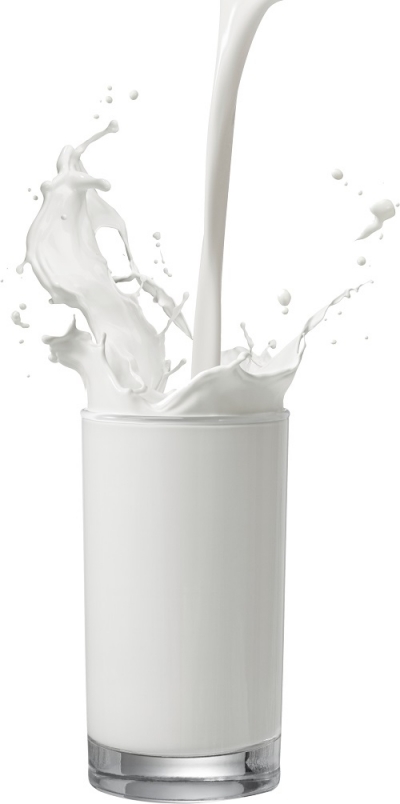
Based on new assessment methods of protein bioavailability (true illeal digestibility) undertaken by the Food and Agriculture Organization (FAO), whey protein concentrate has a DIAAS of 97, while whey protein isolate has a DIAAS of 99.
These extremely high scores are not surprising, given that whey protein contains an abundance of branched chain amino acids, with a high leucine content, and plentiful amounts of all six other essential amino acids.
Though it is beyond the scope of this article to examine the major research articles that have examined the benefits of whey protein, the benefits of this product extend well beyond the simple fact that it provides amino acids for muscle recovery.
For instance, undenatured whey protein contains valuable dipeptides, such as glutamyl-cysteine and cystine. These nutrients support the synthesis of the most powerful endogenous antioxidant in the human body, called glutathione.
Moreover, whey protein is believed to possess blood lipid lowering effects, immune system supportive benefits, anti-viral, anti-bacterial and even blood pressure lowering effects34.
Microfiltration or ultrafiltration are the best methods for obtaining a whey protein containing some undenatured proteins. Though even these products most often go through pasturisation before the whey is extracted, which may denature some protein.
Ion-exchange is the cheapest method for whey protein extraction and use hydrochloric acid and sodium hydroxide in order to create an electrical charge and separate then whey from the lactose and fats. However, the use of acids leads to denaturation of the finished product35.
Quite simply, whey protein supplements support sports and exercise performance and recovery—they are an ergogenic aid. Whey protein supplementation increases lean muscle mass strength and size during resistance exercise programs in all adult age-groups and genders36,37,38.
The process of hydrolyzing whey protein uses acids or proteolytic enzymes, followed by purification processes to create a finished product that is primarily composed of di and tripeptides, and some free amino acids39.
Degree of Hydrolysis is used to determine how well the finished product has been hydrolyzed by a number of methods, including trinitrobenzenesulfonic acid (TNBS), trichloroacetic acid soluble nitrogen (SN-TCA), o-phthaldialdehyde (OPA), formol titration methods and pH-stat40.
The smaller protein and amino acid molecules in hydrolyzed whey protein can be absorbed intact, without the need for further digestion in the human gastrointestinal tract. Theoretically, this would make hydrolyzed whey protein the ultimate fast absorption protein, perhaps even faster than free-form essential amino acid formulations.
Given that hydrolyzed whey protein can be produced by varying methods, and that there is no standardized procedure to achieve the finished product, clinical research findings have been difficult to interpret, with an overall general lack of quality studies to begin with.
Thus far, research indicates similar or perhaps slightly greater benefits of hydrolyzed whey protein isolate compared to whey protein isolate. Though the evidence mostly points towards improved fat-loss, much more research is needed before any concrete conclusions can be drawn41,42.
Casein comprises 82% of the protein found in cow’s milk, with whey contributing 18%. Casein is a water-insoluble protein, which leads to slower digestion times, qualifying at a slow-release protein. The opioid peptides in casein are also believed to slow gastric motility43.
Given the differing properties of casein to whey, the former is better suited to feeding before fasting period, such as before bed. This allows blood amino acids to be sustained over a longer period of time44.
Despite the rapid absorption of whey protein, it is still ideally suited to supporting lean muscle gains and strength. However, some clinical research does indicate that casein post-workout is just as effective as whey protein45,46,47.
Milk Protein Isolate
The entire milk protein complex of approximately 82% casein and 18% whey is milk protein isolate. As the name suggests this is simply isolated proteins from milk, and typically contain 90% protein by weight.
This protein powder contains both whey and casein in their native form, with approximately 5% lactose and 2.5% fat content. Milk Protein Isolates contains all the essential amino acids, just as whey and casein do.
Though most research is undertaken on casein and whey protein powders separately, obviously milk protein isolate will provide some of the benefits of both products. As with casein protein powders, milk protein isolate may be ideally suited to before bed.

For a long time, egg protein has been the gold standard used to compare all other dietary proteins. However, whey protein may be in the process of assuming this role48.
The DIAAS for cooked whole eggs is 91, with a PCDAAS of 104, indicating the bioavailability is high. Unfortunately, most egg protein powders are based on egg whites alone, missing important amino acids found in the yolk49.
Research indicates that the whole eggs are superior for stimulating myofibrillar protein synthesis than egg whites, even when the protein content is matched for both study groups50.
Though there is limited research in the area of egg protein powder use and sports and exercise performance and recovery, whole egg consumption has been shown to increase muscle protein synthesis after resistance exercise51.
In this instance, it is probably a better option to get your egg protein from quality free-range and organic whole eggs rather than egg white protein powder.
Collagen Protein Powders
Marine collagen is a by-product of fish scales, skin and bone, which account for approximately 30% of fish processing waste. Marine collagen is hydrolyzed to improve bioavailability52.
Marine collagen is rich in Type 1 collagen, and a source of glycine, proline, lysine, hydroxyproline and hydroxylysine. Given that type 1 collagen levels decrease as we age and that skin is primarily type 1 collagen, marine collagen has become increasingly popular.
Though research is still in its infancy, marine collagen supplementation has been shown to improve skin elasticity, sebum production and ultrasonic markers of skin integrity. However, other nutrients were used as part of a combination therapy53.
Collagen is not considered a complete protein as it lacks the essential amino acid tryptophan. However, some commercially available products are fortified with tryptophan.
Collagen does contain valuable amino acids to support collagen integrity in humans. Ideally, collagen products are best used in addition to high bioavailability dietary and supplemental protein (not in replace of), due to their high content of non-essential amino acids54.
Bovine collagen is sourced from cow cartilage, bone and connective tissue, though most are hide or skin derived which is primarily type 1 collagen.
As with marine collagen, bovine collagen does not naturally contain any of the essential amino acid tryptophan. However, some collagen products are tryptophan fortified.
Hydrolyzed Bovine collagen research is more widespread than marine collagen, with results indicating a number of potential therapeutic benefits. For instance, hydrolyzed collagen supplementation has been shown to provide symptomatic relief of osteoarthritic pain and a benefit for osteoarthritis55.
In addition, bovine collagen enhances skin elasticity in elderly women. Some improvement was also noted in skin hydration and evaporation, however this data did not reach statistical significance56.
Research published in 2015 by the British Journal of Nutrition indicated that hydrolyzed collagen supplementation was more effective than exercise alone in elderly sarcopenic men. The treatment group increased muscle mass and strength, and decreased fat mass to a greater degree than the exercise and placebo group57.
However, as reported in the CSIRO research, elderly men are the most likely to respond to increased dietary protein due to dietary protein intakes below the RDA. Therefore, the higher muscle mass and strength response seen in the treatment group may not be an indication of the quality of the protein, so much as a desperate biological response to accrue body proteins in a protein deficient state.
There is no denying that tryptophan-fortified bovine collagen hydrolysate may be ideal for supporting human collagen integrity, due to its unique amino acid profile, and hydroxylated amino acids.
This may become increasingly important in old age when collagen integrity declines, and for anyone regularly engaging in intense weight-lifting, power-lifting or strongman activities, as research shows that collagen synthesis increases rapidly after strenuous exercise58.
However, until more research is published examining the benefits of this product, it is best used in addition to quality protein of a high biological value, especially if it is not tryptophan-fortified.
Lactose-Free Protein Powders
Lactose is a low-glycemic index milk sugar (disaccharide) made up of glucose and galactose. Lactose intolerance is an inability to digest large amounts of lactose due to a lack of an enzymes called lactase.
Lactase is an enzyme synthesized in large amounts during the early years of life to digest the sugar in mother’s milk. Lactase synthesis decreases with age, reducing lactose digestion ability.
Most lactose intolerant people are able to tolerate up to 13 grams of lactose daily, spread throughout the day, with negligible symptoms59. Many dairy-based protein powders contain minimal lactose, such as whey protein isolate (WPI).
WPI is approximately 1% lactose by weight, with a 30 gram serve containing less than half a gram of this sugar. This means most lactose intolerant people will be fine using this product.
However, extremely sensitive people may prefer to opt for a completely lactose-free product, which are any plant-based proteins, egg protein, collagen protein and even beef protein.
References
1. USDA Nutrient Database.
2. Westerterp-Platenga MS et al. Dietary Protein – Its Role in Satiety, Energetics, Weight Loss and Health. British Journal of Nutrition 2012 Suppl 2:S105-112
3. Report of a Joint WHO/FAO/UNU Expert Consultation. Protein and Amino Acid Requirements in Human Nutrition. WHO Technical Report Series
4. Nutrient Reference Values for Australia and New Zealand. Ministry of Health, Australian Government.
5. Jager R et al. International Society of Sports Nutrition Position Stand: protein and exercise. Journal of the International Society of Sports Nutrition 2017 Vol 14;20
6. Protein Balance: New Concepts for protein in weight management. CSIRO January 2018
7. Geisler C et al. Inadequacy of Body Weight-Based Recommendations for Individual Protein Intake—Lessons from Body Composition Analysis. Nutrients, 2017 Vol 9;3
8. Von Haehling S et al. An overview of sarcopenia: facts and numbers on prevalence and clinical impact. Journal of Cachexia, Sarcopenia and Muscle. 2010 Vol 1;2 p.129-133
9. Zhang X et al. Association of sarcopenic obesity with the risk of all-cause mortality among adults over a broad range of different settings: a updated meta-analysis. BMC Geriatrics 2019 Vol 19;18
10. Layman DK et al. Defining meals requirements for protein to optimize metabolic roles of amino acids. American Journal of Clinical Nutrition 2015 101(Suppl) 1330-8S
11. Layman DK. Dietary Guidelines should reflect new understandings about adult protein needs. Nutrition and Metabolism 2009 Vol 6;12
12. Kumar V et al. Human muscle protein synthesis and breakdown during and after exercise. Journal of Applied Physiology. 2009 Vol 106 p.2026-2039
13. Bilancio G et al. Dietary protein, kidney function and mortality: review of the evidence from epidemiological studies. Nutrients. 2019 Vol 11;1 p.196
14. Redy ST et l. Effect of low-carbohydrate high-protein diets on acid-base balance, stone-forming propensity, and calcium metabolism. American Journal of Kidney Diseases. 2002 Vol 40;2 p.265-274
15. Antonio J et al. A high protein diet (3.4 g/kg/d) combined with a heavy resistance training program improves body composition in healthy trained men and women – a follow-up investigation. Journal of the International Society of Sports Nutrition 2015
16. Antonio J et al. The effects of consuming a high protein diet (4.4 g/kg/d) on body composition in resistance-trained individuals. Journal of the International Society of Sports Nutrition 2014
17. Dahl W et al. Review of the health benefits of peas (Pisum sativum L.). The British Journal of Nutrition. 2012 Vol 108 S3-S10
18. Krefting J. The Appeal of Pea Protein. Journal of Renal Nutrition 2017 Vol 27;5 p.e31-e33
19. Gorissen SM et al. Protein content and amino acid composition of commercially available plant-based protein isolates. Amino Acids 2018 Vol 50 p.1685-1695
20. Banaszek A et al. The Effects of Whey vs. Pea Protein on Physical Adaptations Following 8-Weeks of High-Intensity Functional Training (HIFT): A Pilot Study. Sports (Basel) 2019 Vol 7;1 p.12
21. Babault N et al. Pea proteins oral supplementation promotes muscle thickness gains during resistance training: a double-blind, randomized, Placebo-controlled clinical trial vs. Whey protein. Journal of the International Society of Sports Nutrition, 2015 Vol 12;3
22. Vasconcelos IM and Oliveira JT. Antinutritional properties of plant lectins. Toxicon 2004 Vol 44;4 p.385-403
23. Joy J.M., et al. The effects of 8 weeks of whey or rice protein supplementation on body composition and exercise performance. Nutrition Journal. 2013 Vol 12; 86
24. Purpura M et al. A comparison of blood amino acid concentrations following ingestion of rice and whey protein isolate: a double blind crossover study. Journal of Nutrition and Health Sciences. 2014 Vol 1;3
25. Callaway JC. Hempseed as a nutritional resource: an overview. Euphytica. 2004 Vol 140;1 p.65-72
26. Wang Q and Xiong YL. Processing, Nutrition, and Functionality of Hempseed Protein: A Review. Comprehensive Reviews in Food Science and Food Safety 2019
27. Rodriguez-Levya D and Pierce GN. The cardiac and haemostatic effects of dietary hempseed. Nutrition and Metabolism. 2010 Vol 7
28. Messina M and Redmond G. Effects of soy protein and soybean isoflavones on thyroid function in healthy adults and hypothyroid patients: a review of the relevant literature. Thyroid. 2006 Vol 16;3 p.249-258
29. Haun CT et al. Soy protein supplementation is not androgenic or estrogenic in college-aged men when combined with resistance exercise training. Scientific Reports. 2018
30. Messina M. Soy and health update: evaluation of the clinical and epidemiologic literature. Nutrients. 2016 Vol 8;12
31. Tang JE et al. Ingestion of whey hydrolysate, casein, or soy protein isolate: effects on mixed muscle protein synthesis at rest and following resistance exercise in young men. Journal of Applied Physiology. 1985 Vol 107;3 p.987-992
32. Rabey JM et al. Improvement of Parkinsonian Features Correlate With High Plasma Levodopa Values After Broad Bean (Vicia Faba) Consumption. Journal of Neurology, Neurosurgery and Psychiatry. 1992 Vol 55;8 p.725-727
33. Marshall, K. Therapeutic Applications of Whey Protein. Alternative Medicine Review, 2004 Vol 9;2 p.136-156
34. Renan M, Mekmene O, Famelart MH, Guyomarc'h F, Arnoult-Delest V, Paquet D, et al. Ph-dependent behaviour of soluble protein aggregates formed during heat-treatment of milk at ph 6.5 or 7.2. J Dairy Res. 2006;73:79–86
35. West D.W.D., et al. Whey Protein Supplementation Enhances Whole Body Protein Metabolism and Performance Recovery after Resistance Exercise: A Double-Blind Crossover Study. Nutrients. 2017 Vol 9;7\
36. Pennings B et al. Whey Protein stimulates postprandial muscle protein accretion more effectively than do casein and casein hydrolysate in older men. The American Journal of Clinical Nutrition. 2011 Vol 93;5
37. Lam FC et al. Efficacy and Safety of Whey Protein Supplements on Vital Signs and Physical Performance Among Athletes: A Network Meta-Analysis. Frontiers in Pharmacology 2019
38. Manninen AH. Protein hydrolysates in sports nutrition. Nutrition and Metabolism 2009 Vol 6;38
39. Rutherford S. Methodology for Determining Degree of Hydrolysis of Proteins in Hydrolysates: A Review. Journal of AOAC International 2010 Vol 93;5 p.1515-1522
40. Jager R et al. International Society of Sports Nutrition Position Stand: protein and exercise. 2017 Vol 14;20
41. Lockwood CM et al. Effects of hydrolysed whey versus other whey protein supplements on the physiological responses to 8 weeks of resistance exercise in college-aged males. Journal of the American College of Nutrition. 2017 Vol 36;1 p.16-27
42. Jager R et al. International Society of Sports Nutrition Position Stand: protein and exercise. 2017 Vol 14;20
43. Trommelen J and van Loon LJC. Pre-Sleep Protein Ingestion to Improve the Skeletal Muscle Adaptive Response to Exercise Training. Nutrients 2016 Vol 8;12 p.763
44. Cribb PJ, Williams AD, Carey MF, Hayes A. The effect of whey isolate and resistance training on strength, body composition, and plasma glutamine. Int J Sport Nutr Exerc Metab. 2006;16:494–509.
45. Reitelseder S et al. Whey and casein labeled with L-[1-13C] leucine and muscle protein synthesis: effect of resistance exercise and protein ingestion. American Journal of Physiology. 2001 Vol 300;1 E231-E242
46. Tipton KD et al. Ingestion of Casein and Whey Proteins Result in Muscle Anabolism After Resistance Exercise. Medicine and Science in Sports and Exercise 2004 Vol 36;12 p.2073-2081
47. Wilson J, Wilson GJ. Contemporary issues in protein requirements and consumption for resistance trained athletes. J Int Soc Sports Nutr. 2006;3:7–27
48. Boye J et al. Protein quality evaluation twenty years after the introduction of the protein digestibility corrected amino acid score method. British Journal of Nutrition 2012 Vol 108 S183-S211
49. van Vliet S et al. Consumption of Whole Eggs Promotes Greater Stimulation of Postexercise Muscle Protein Synthesis Than Consumption of Isonitrogenous Amounts of Egg Whites in Young Men. American Journal of Clinical Nutrition 2017 Vol 106;6 p.1401-1412
50. Moore DR, Robinson MJ, Fry JL, Tang JE, Glover EI, Wilkinson SB, et al. Ingested protein dose response of muscle and albumin protein synthesis after resistance exercise in young men. Am J Clin Nutr. 2009;89:161–8
51. Subhan F et al. Marine COllagen: An Emerging Player in Biomedical Applications. JOurnal of Food Science and Technology 2015 Vol 52;8 p.4703-4707
52. De Luca C et al. Skin antiaging and systemic redoc effects of supplementation with marine collagen peptides and plant-derived antioxidants: a single-blind case-control clinical study. Oxidative Medicine and Cellular Longevity. 2016
53. Porfirio E and Fanaro GB. Collagen supplementation as a complementary therapy for the prevention and treatment of osteoporosis and osteoarthritis: a systematic review. Revista Brasileira de Geriatria e Gerontologia. 2016 Vol 19;1
54. Proksch E et al. Oral supplementation of specific collagen peptides has beneficial effects on human skin physiology: a double-blind, placebo-controlled study. Skin Pharmacology and Physiology. 2014 Vol 27;1 p.47-55
55. ZdZieblik D et al. Collagen peptide supplementation in combination with resistance training improves body composition and increases muscle strength in elderly sarcopenic men: a randomized controlled trial. 2015 Vol 114;8 p.1236-1245
56. Miller BF et al. Coordinated collagen and muscle protein synthesis in human patella tendon and quadriceps muscle after exercise. Journal of Physiology 2005 Vol 567 (part 3) p.1021-1033
57. Suarez F.L., et al. A Comparison of Symptoms after the Consumption of Milk or Lactose-Hydrolyzed Milk by People with Self-Reported Severe Lactose Intolerance. The New England Journal of Medicine. 1995 Vol 333 p.1-4
58. Pennings B et al. Exercising before protein intake allows for greater use of dietary protein-derived amino acids for de novo muscle protein synthesis in both young and elderly men. American Journal of Clinical Nutrition 2011 Vol 93;2 p.322-331
59. Paul C et al. Significant Amounts of Functional Collagen Peptides Can Be Incorporated in the Diet While Maintaining Indispensable Amino Acid Balance. Nutrients 2019 Vol 11;5
Image Credits
Header Image Background Created by kjpargeter, Courtesy of FreePik.
2-Fried-Eggs In-Text Image Courtesy of FreePik.
Fried Egg on a Plate with Blue Timber Background Created by jcomp, Courtesy of FreePik.
Soyabean image Created by jcomp, Courtesy of FreePik.



